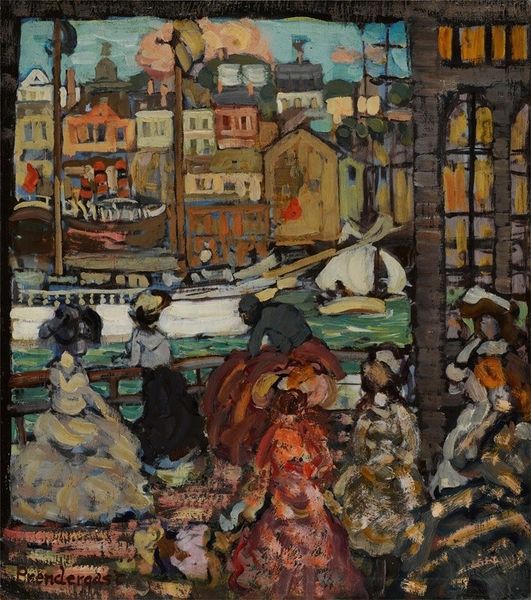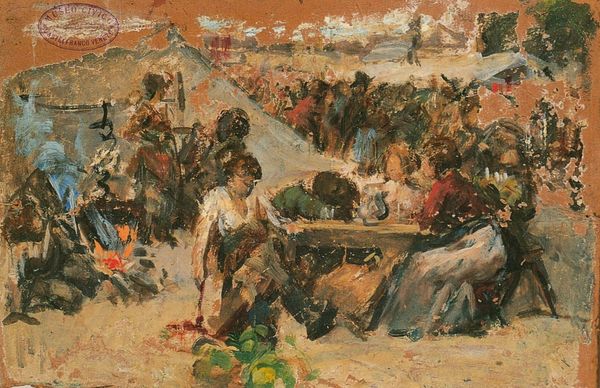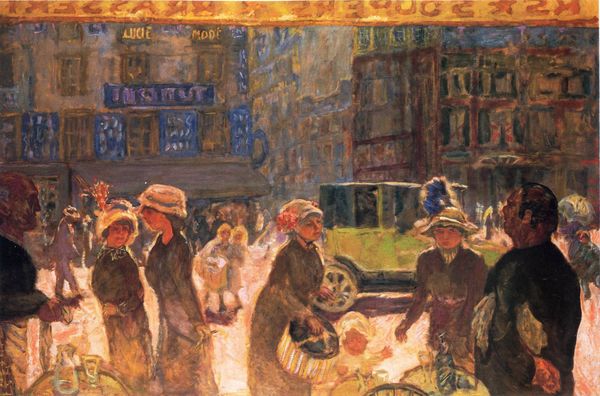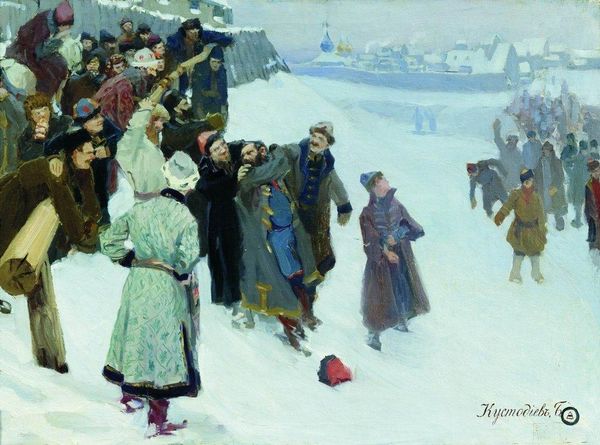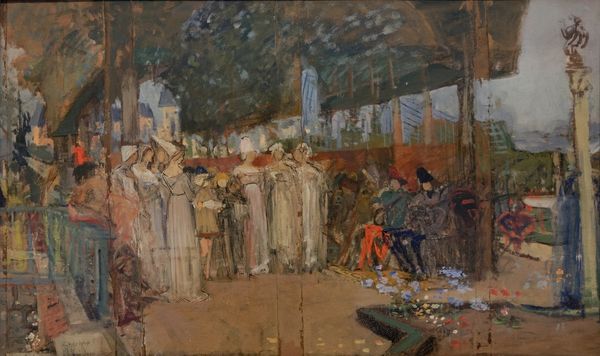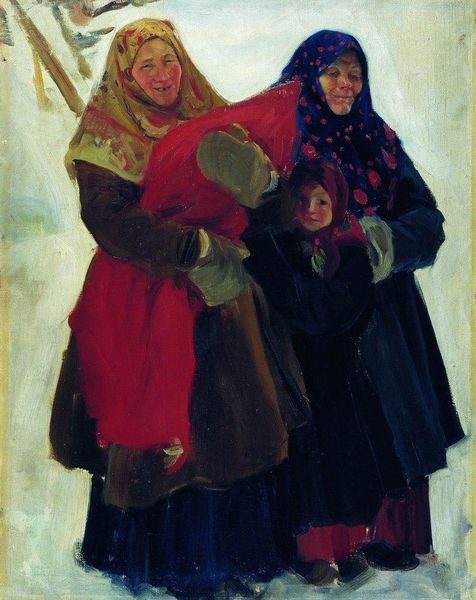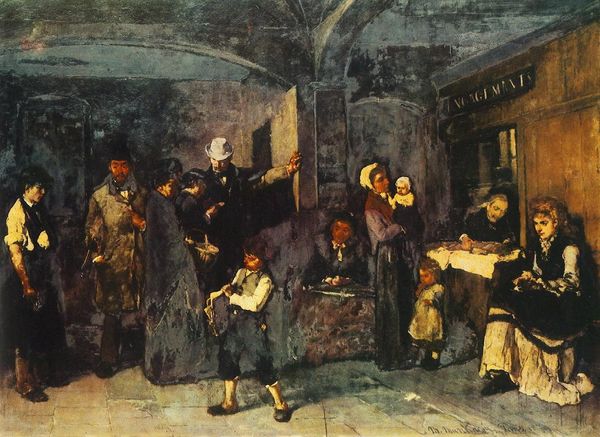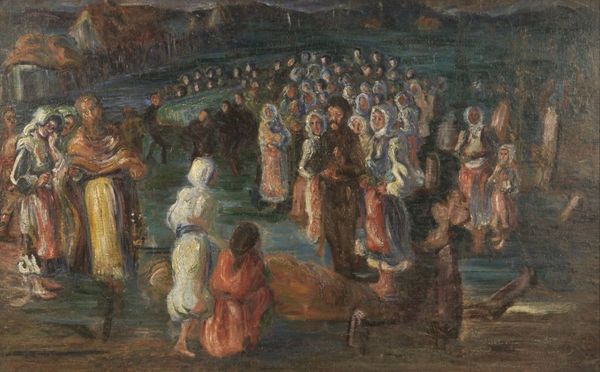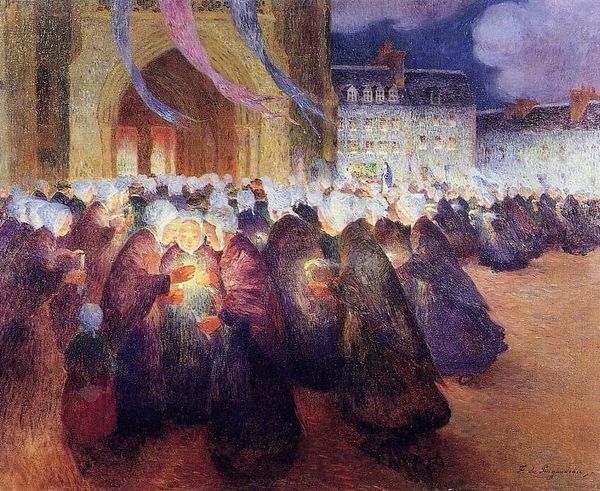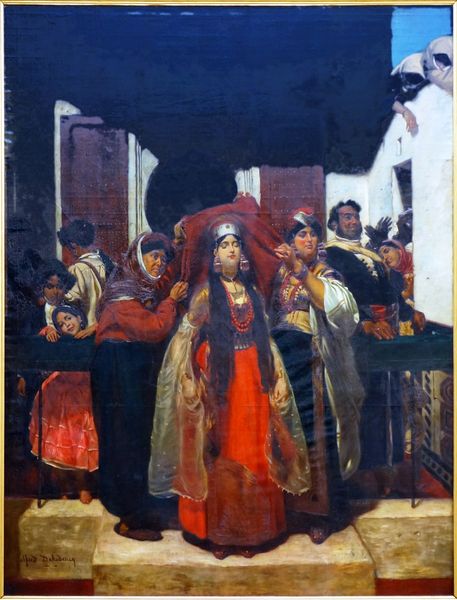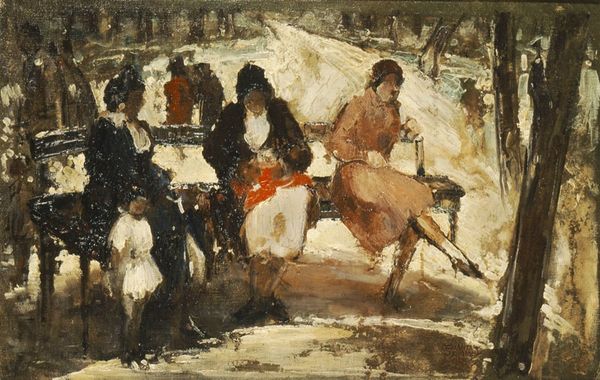
oil-paint
#
oil-paint
#
oil painting
#
famous-people
#
russian-avant-garde
#
genre-painting
#
history-painting
Copyright: Public domain
Curator: This is Boris Kustodiev’s oil painting, "Exit of Tsar Ivan the Terrible," created around 1900. The painting seems to capture a historical moment, or perhaps a theatrical tableau, centered around the infamous Tsar. What's your immediate take? Editor: I'm struck by the somber mood, despite the presence of the vibrant yellow sky in the background and those doll like figures atop the building. There's a feeling of oppression, and maybe, expectation of cruelty to come; the overall tonal unity evokes this sense. It's all shades of gloom, with spots of faded brightness. Curator: That subdued palette really underscores the weight of Ivan's legacy, doesn't it? Kustodiev is playing with cultural memory here. Even if you don't know the specific history, the imagery conjures up a sense of old Russia, of autocratic power. Editor: Absolutely, the composition feels deliberately staged, reinforcing the image of the Tsar as a performer on the stage of history. Notice the building set back. The very architecture speaks to Russia's history, serving almost as a backdrop to this very deliberate procession. I'm curious about Kustodiev's choice to portray this "exit" – what is the social function in choosing to remember a ruler like this? Curator: It is definitely loaded. The "exit" implies a departure from somewhere, and knowing Ivan's reign, that somewhere is probably a place of immense suffering. Symbolically, perhaps it is a burdened departure, but it can be interpreted in other ways given that his historical imprint left lasting marks. Editor: Yes. And is he being ousted? What can you tell me about the symbols or references you see, and how Kustodiev might be positioning Ivan within the broader narrative of Russian history at the time? Curator: Those bearing red offerings, they become striking visual elements suggesting either reverence or sacrifice. The building, the colors… All evoke a collective cultural consciousness related to the idea of the Tsar’s power, filtered through the artist's lens, of course, as part of that social critique that one associates to Russian Avant-Garde, especially within certain factions. Editor: I see your point about the offering in red—interesting considering what history suggests, given the terror that the ruler was known for. Looking closely at the composition and considering it was painted at the turn of the century, Kustodiev seems to make it very clear about how Ivan the Terrible and his role must be critically examined. A complicated man as any symbol is. Curator: A dark memory turned into art, to make it memorable. I leave contemplating about the ways history is visualized and transformed across time.
Comments
No comments
Be the first to comment and join the conversation on the ultimate creative platform.
